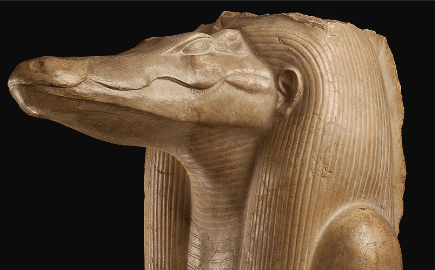Facsimile 1 in the Book of Abraham shows an Egyptian priest of Pharaoh attempting to slay Abraham on an altar. The figure shows canopic vessels under the altar and beneath the feet of the priest is a crocodile. Joseph Smith’s explanation of the crocodile, printed with the facsimile, is that it represents the “idolatrous god of Pharaoh.” This may be the Egyptian crocodile god Sobek, now known to have been venerated in Mesopotamia during what may have been Abraham’s time. See “Sobek: The Idolatrous God of Pharaoh Amenemhet III” (PDF) by Quinten Barney, Journal of the Book of Mormon and Other Restoration Scripture, 22/2 (2013): 22–27. A story in the Book of Abraham and Joseph Smith’s interpretation of at least part of Facsimile 1 now has increased plausibility. This is one of several recently recognized examples of ancient Egyptian influence in Mesopotamia and adjoining areas, consistent with some elements in the Book of Abraham.
I mention this and some related issues on my Mormon Answers (LDSFAQ) page about the Book of Abraham (Part 2), which includes some evidences for the plausibility or authenticity of the BOA. See also Part 3, “Ancient Evidences for the Book of Abraham: Other Records Confirm its Story.”
By the way, Barney’s article appears in the last ever issue of the Journal of the Book of Mormon. Sigh. That apologetic torch appears to have been passed on to the Mormon Interpreter and other resources. That final issue contained some real gems, such as John Gee’s speculative but intriguing suggestion that Olishem in the Book of Abraham may have been discovered. Will be interesting to see how that plays out.
Below is Facs. 1. The idolatrous god of Pharaoh is the crocodile at the bottom, Figure 9.











What happens if John Gee's suppositions prove to be false? Will he write a follow up analysis, or will he simply move on and never mention it again?